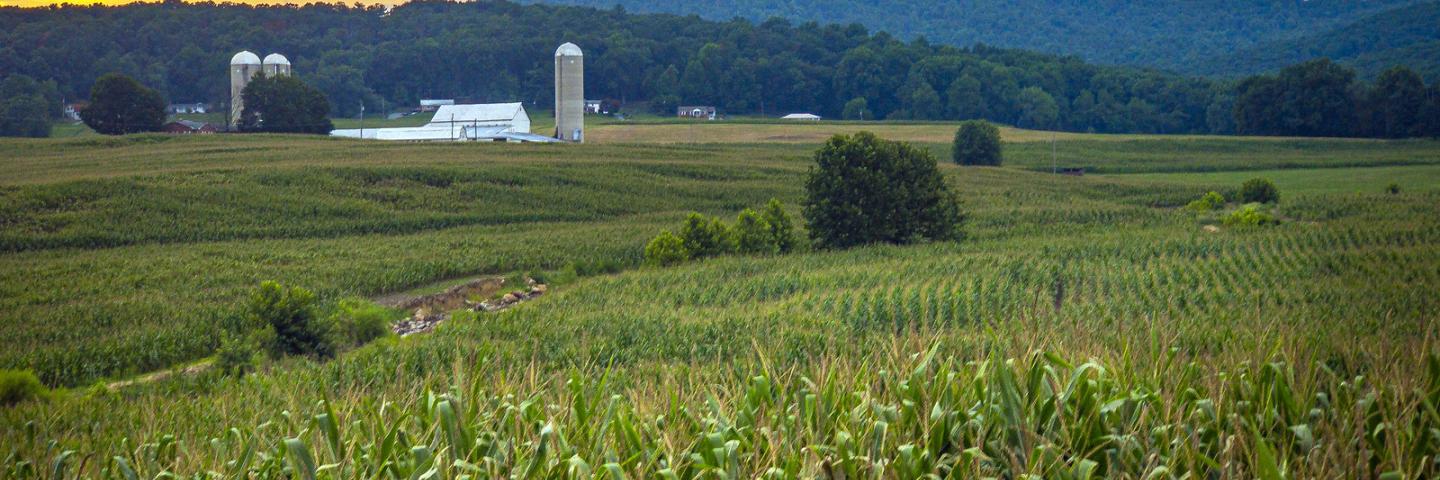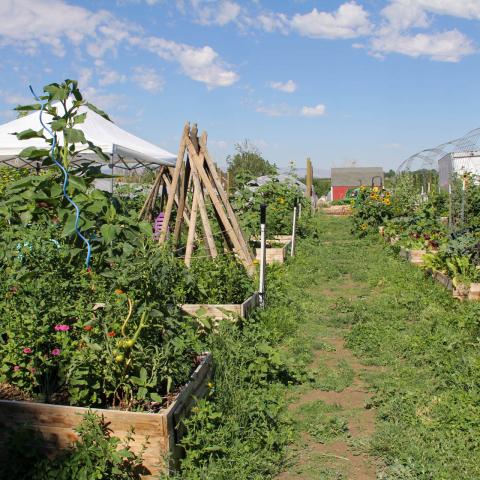
NRCS helps agricultural producers and private landowners voluntarily mitigate climate change (reduce greenhouse gas emissions and improve carbon storage) by providing technical and financial assistance, tools, science, and knowledge.
Effective beginning 5/20/2025: Please note this site is under review and content may change.
According to the Intergovernmental Panel on Climate Change, climate change mitigation is achieved by limiting or preventing greenhouse gas (GHG) emissions and by enhancing activities that remove these gases from the atmosphere. Agriculture contributes to nearly 11% of total greenhouse gas emissions in the United States, according to the Inventory of U.S. Greenhouse Gas Emissions and Sinks. Minimizing the impacts of long-lived pollutants in the atmosphere requires reducing or eliminating the emissions of these pollutants at their source. Through the conservation planning process, NRCS helps agricultural producers and private landowners voluntarily mitigate climate change (reduce greenhouse gas emissions and improve carbon storage) by providing technical and financial assistance, tools, science, and knowledge.
Each agricultural operation is unique. Through voluntary conservation programs, NRCS offers a broad suite of conservation practices and enhancements that can accommodate the diversity of operations across America’s working lands. The agency has identified practices and enhancements that are critical to climate change mitigation. When applied appropriately, these climate-smart mitigation measures can deliver quantifiable greenhouse gas reductions or increases in carbon sequestration, including through enhanced carbon stocks in perennial biomass and soils. Most of these activities also offer added benefits (also known as co-benefits and ancillary benefits) such as improved water quality, wildlife habitat, pollinator forage and many other environmental improvements. Other added benefits to agricultural operations include building climate change resilience to extreme weather events, such as drought, and supporting healthier soils.
For more information on climate change mitigation and agriculture, see our booklet: The Role of Agriculture in Climate Change Mitigation
Mitigation Highlights
NRCS Climate-Smart Mitigation Activities
Learn more about NRCS Climate-Smart Mitigation Activities and the voluntary conservation practices and enhancements that can support climate change mitigation by reducing greenhouse gas emissions or increasing carbon sequestration.
Download the Climate-Smart Agriculture and Forestry Mitigation Activity List to view the full list of mitigation activities, including practices available through the Environmental Quality Incentives Program (EQIP) and enhancements available through the Conservation Stewardship Program (CSP).
Greenhouse Gas Estimation Tools
COMET-Planner™ is an evaluation tool designed to provide estimates of greenhouse gas reductions expected by adopting NRCS conservation practices. Use of this tool is intended for conservation planning purposes and does not provide site-specific calculations. Please visit COMET-Farm for an estimate tailored to site specific conditions of your farm.
COMET-Farm™ is an interactive online tool to estimate whole-farm, ranch, and forestry emissions and mitigation options.
Environmental Markets and Conservation Finance
Environmental markets and conservation finance approaches complement NRCS’s work by bringing private and other non-Federal investments and revenue sources to private lands conservation, including to pay for ecosystem services that benefit society such as carbon sequestration or GHG reductions. NRCS supports environmental markets and conservation finance through providing partnership and grant opportunities through the Conservation Innovation Grants (CIG) and the Regional Conservation Partnership Program (RCPP); developing technical tools, such as COMET; and supporting networks, including the Conservation Finance Practitioners Roundtable.
USDA Climate-Smart Agriculture and Forestry Strategy
This Climate-Smart Agriculture and Forestry Strategy: 90 Day Progress Report provides recommendations and next steps to support the Department in implementing climate solutions in ways that build strong communities, fair markets, and are inclusive of all Tribes and stakeholders. The climate-smart agriculture and forestry strategy employs proven conservation practices to achieve enhanced productivity and economic sustainability for U.S. agriculture and forestry; improved ecological, social, and economic resilience to climate change; increased carbon sequestration; and reduced greenhouse gas (GHG) emissions.




